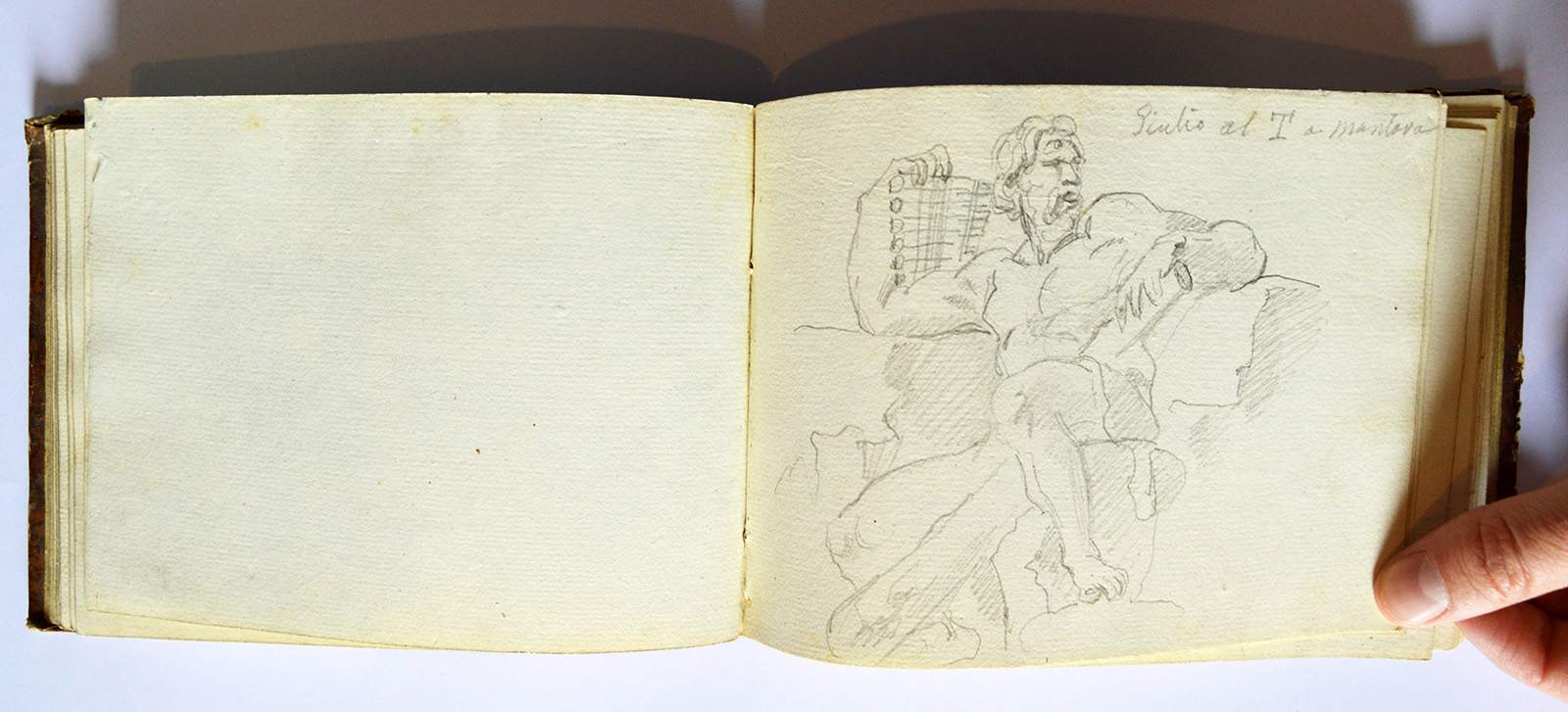Mantua, precious 19th century notebook donated to Ducal Palace: who will be the author?
The collections of the Ducal Palace in Mantua are enriched by a precious and refined notebook of drawings donated by an anonymous benefactor to the museum. It is a notebook made by a traveling artist, consisting of 82 sheets, 58 of which are filled with graphite pencil drawings on both sides, made by a confident and quality hand that, on the notebook, drew works, monuments and personalities in different cities of northern Italy, from Mantua to Venice, from Verona to Ferrara, from Cento to Bologna. These are works ranging from the Middle Ages to the 18th century. As for the dating of the notebook, it can be placed in a span situated between the chronological extremes of 1815 and 1842, but the identification of the author of the work could lead to narrowing this dating.
The two chronological terms were identified based on the contents of the notebook. For Verona, it mentions “three paintings by Mantegna returning from Paris” present in the basilica of San Zeno, which suggests that the artist did not set out before 1815 (the date of the return of the works requisitioned during the Napoleonic spoliations), and the copy of Guercino’sAssumption formerly in the Tanari collection in Bologna fixes the terminus ad quem at 1842, the date when the work was sold (today it is in the Hermitage in St. Petersburg). It is probably a notebook made during a formative trip that the artist, in the wake of the fashionable Grand Tour that cemented Italy’s reputation as a place of art and beauty, made to northern Italy.
“I would like not only to express gratitude to the donor of this beautiful notebook,” says the director of the Ducal Palace, Stefano L’Occaso, “but also to draw interest to this series of drawings, which include medieval Veronese monuments, Venetian Renaissance paintings, works by Guercino, but also the Albertian church of Sant’Andrea and some frescoes of Palazzo Te, which the unknown artist had the opportunity to appreciate. This is, I believe, a painter from northern Italy, probably a Venetian, who already participates in the Romantic spirit and also proves to be a skilled portraitist. Some annotations in pencil might suggest that the author of the drawings is Placido Fabris (Pieve d’Alpago, August 26, 1802 - Venice, December 7, 1859), a painter long active in Venice but also in Milan; this hypothesis would lead one to date the notebook within 1838.”
Now the Doge’s Palace is waiting for some young scholar, perhaps with the opportunity of a dissertation or doctoral thesis, to undertake the study of the notebook, identifying all the works portrayed and identifying its author.
 |
| Mantua, precious 19th century notebook donated to Ducal Palace: who will be the author? |
Warning: the translation into English of the original Italian article was created using automatic tools. We undertake to review all articles, but we do not guarantee the total absence of inaccuracies in the translation due to the program. You can find the original by clicking on the ITA button. If you find any mistake,please contact us.





























